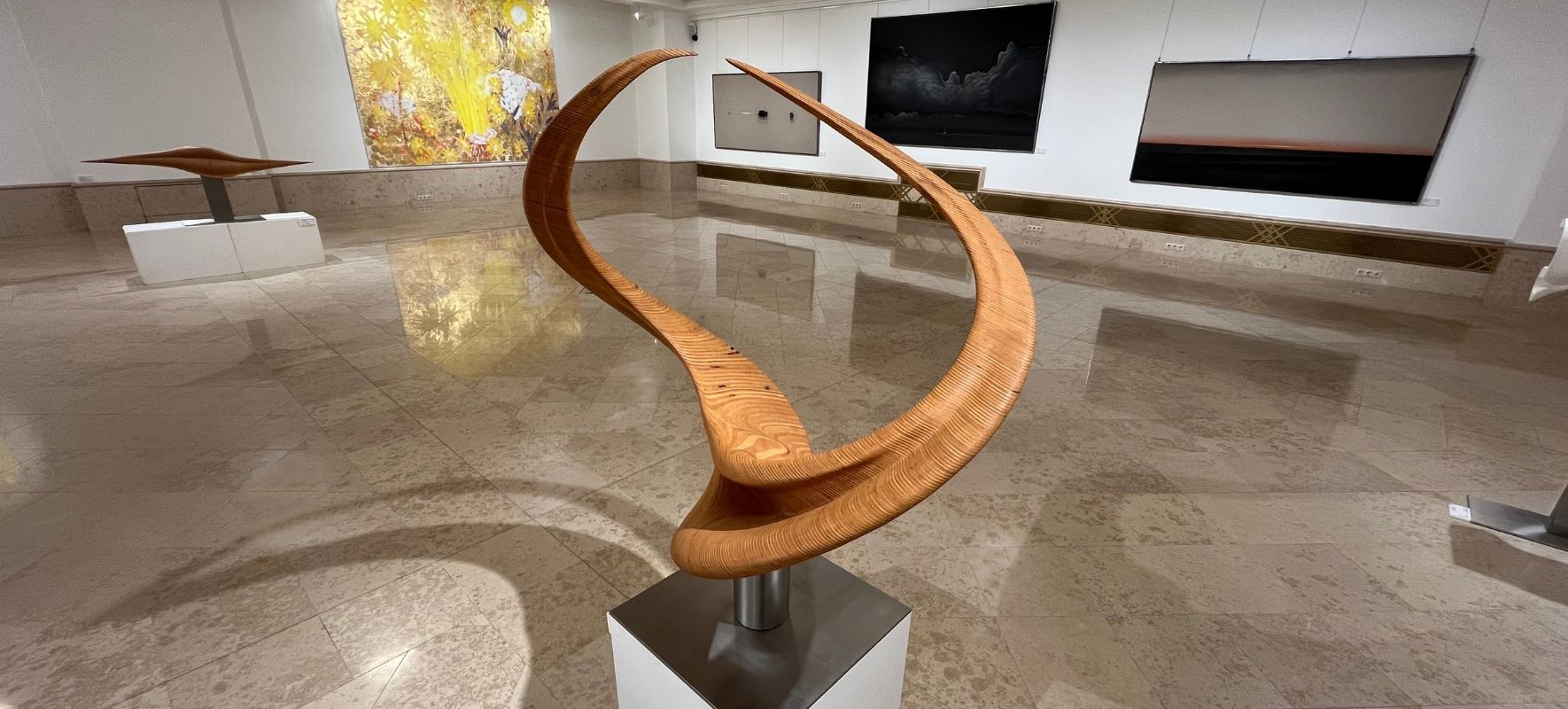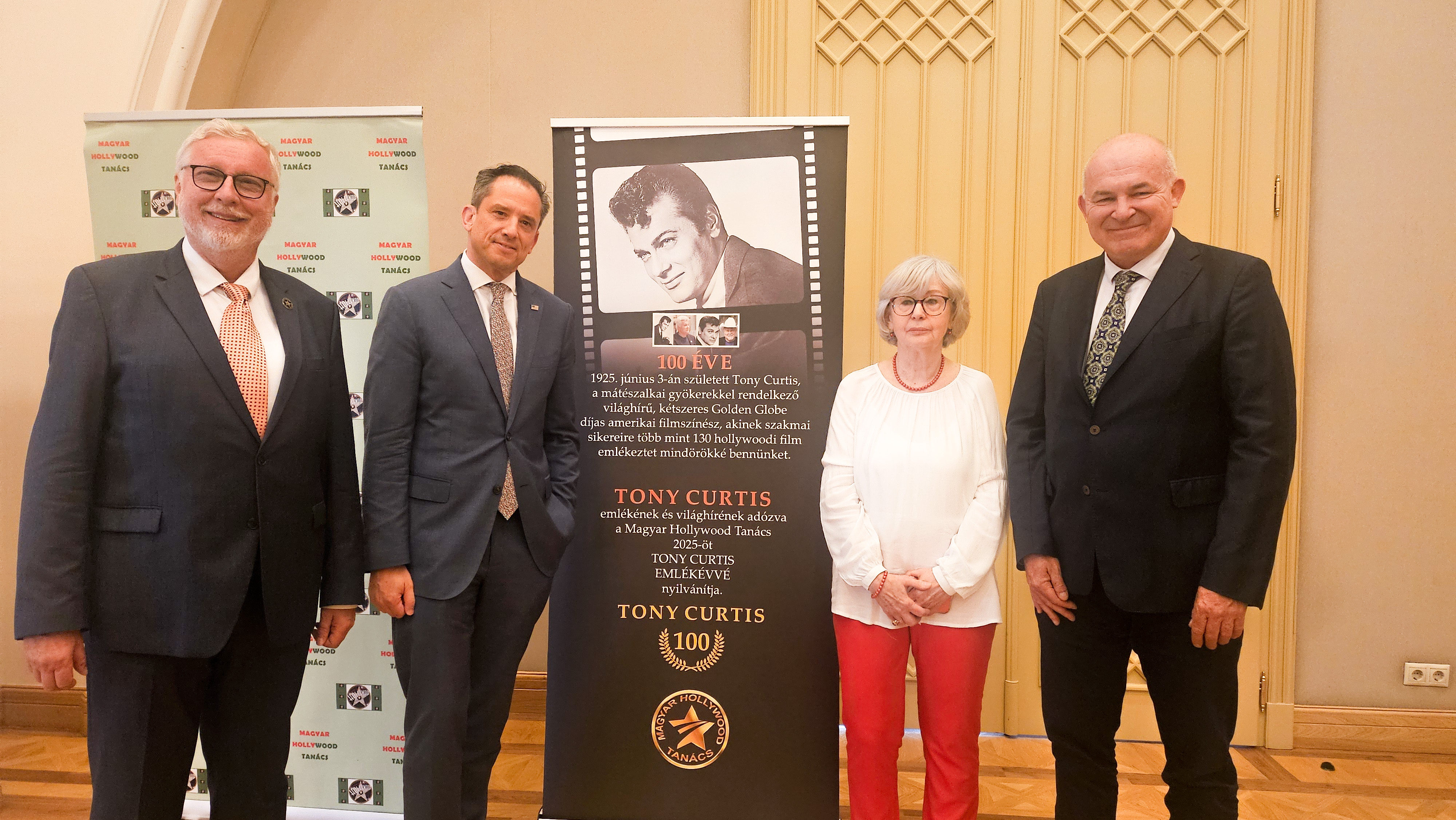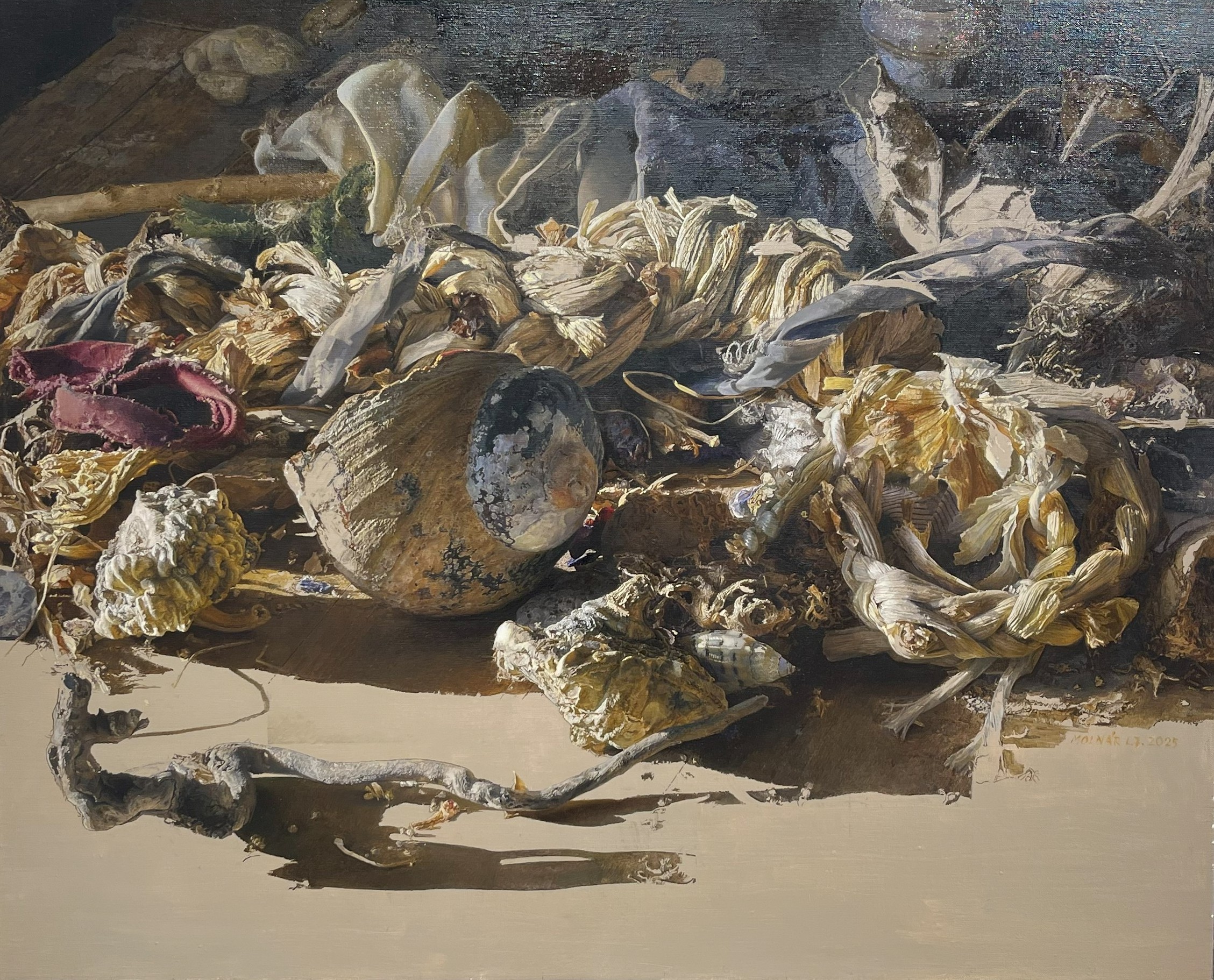In commemoration of the 30th anniversary of the formation of the Visegrad Group composed of the V4 countries, this international poster exhibition organised by the Hungarian Academy of Arts showcases 150 selected artworks prepared by each of the V4 countries' three most outstanding poster artists. Pesti Vigadó interviewed curator of the exhibition Ducki Krzysztof about the development and transformation of poster art and the role of posters in today's world.
Interview by Hanna Imre
You were born in Poland and continued your studies there. Could you tell us about that period? What was studying to be a graphic artist like in the Polish capital in the 1970s and 1980s?
It was almost 40 years ago that I graduated from the Academy of Fine Arts in Warsaw in 1982. It was a turbulent period. In some ways it was probably similar to the current situation caused by the COVID-19 pandemic. General values so far cherished suddenly changed from one day to the next. One inevitably had to adapt to this new situation in one way or another. At the Academy I had numerous distinguished teachers including Professor Lech Majewski, who later became the Director of the International Poster Biennale in Warsaw. This exhibition now showcased in Budapest, currently hosted by Pesti Vigadó and jointly organised by the Hungarian Academy of Arts, also features Lech Majewski's works and also artworks by his students.
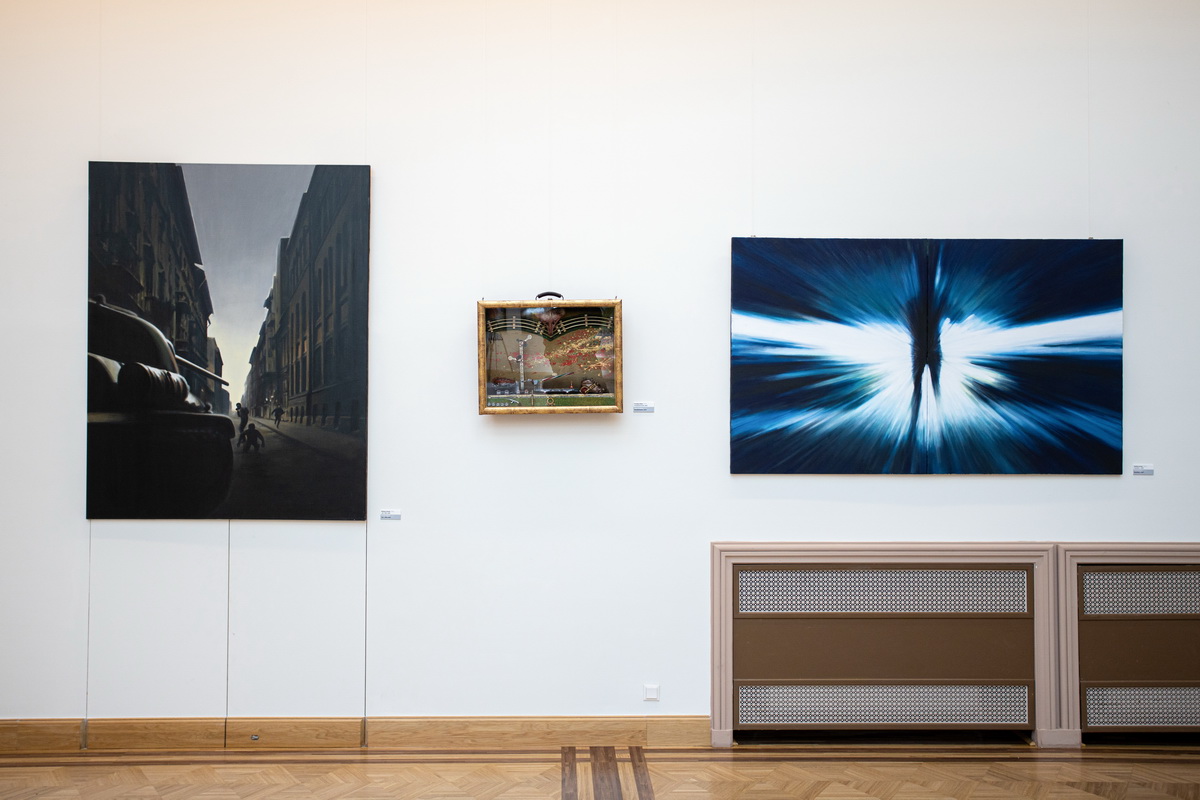
From among the numerous well-known techniques of graphics what attracted you and how were you drawn to poster making?
Up until the completion of my studies, I felt book design, press illustration and animation to the closest to me, but then things suddenly changed because of my circumstances. Immediately after obtaining my degree I left Poland and, for personal reasons, ended up in Budapest, where I was entrusted to do poster design. At the Hungarian state-owned company MOKÉP, which was the only film distributor in Hungary at that time, I was engaged in designing posters for films, and my activities generated newer and newer commissions for me.
According to its definition, a poster is an outdoor advertising medium produced with the help of graphic and typographic elements, and is a classic form of applied graphics and visual communication. What did the notion of the poster mean in reality 40 years ago and what does it mean these days?
The posters used 40 years ago constituted an important part of everyday life. They were as common as an object of household use. In fact, all posters were printed in at least 5,000 copies and were selected and stacked according to their colours. These posters were visible everywhere in the entire town. The greatest difference between the posters of those days and today's posters lies in the form of posters. The posters of 2021 are much less personal, they are composed of millions of pixels and many times they only exist exclusively in the virtual space. This means that if I turn off the screen, they no longer exist.
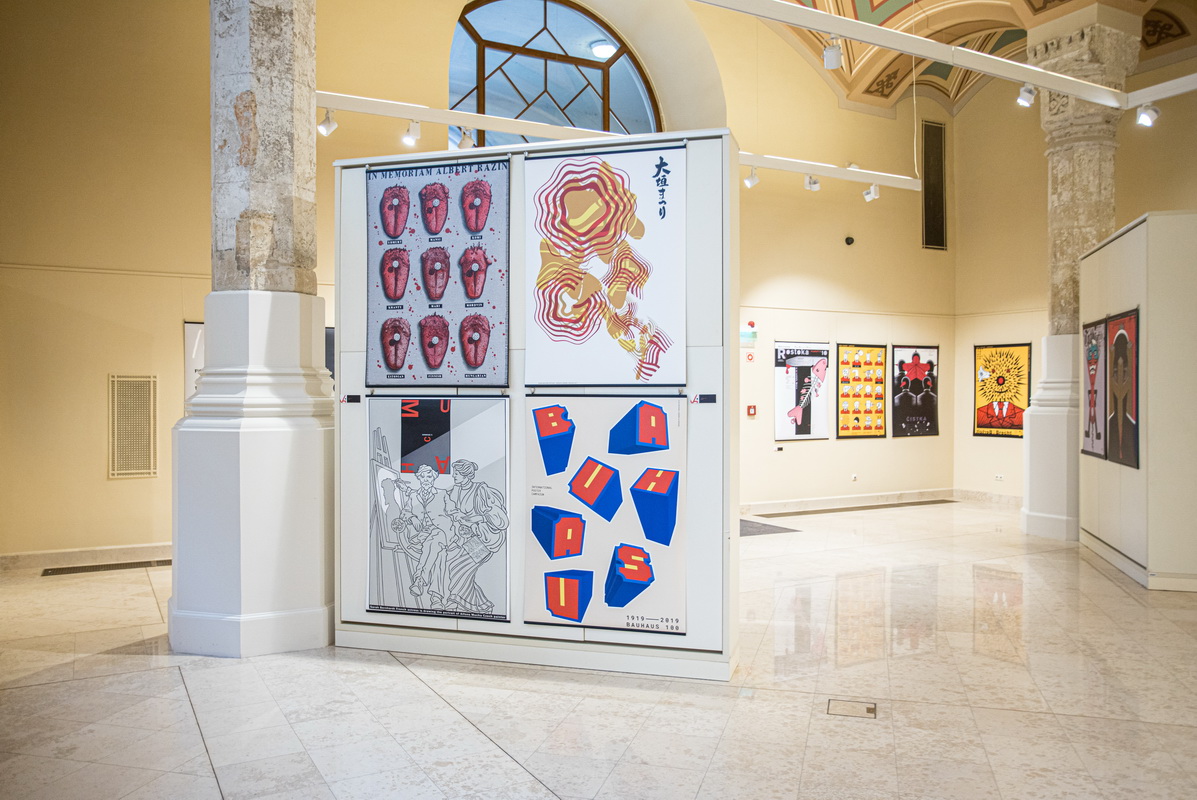
What is a good poster like?
The poster is a message. It must present something that raises interest and must make an impression in its viewer. In addition, the poster must be capable of doing this within a very short time.
How does poster art live on these days? And what are the most significant effects of the digital world on poster art?
Today technology offers us much more speedy data transfer than before. From one point to the other in the world news travels within a few seconds through the Internet. And this has created a situation in which the creative process has become a kind of non-stop and technologised job. Yet, the message to be conveyed is unchanged: with the help of completed artworks, artists wish to convey feelings and metaphors, and while doing so they wish to engage their audiences in meaningful and sensible dialogues. The most important goal is to communicate and to share knowledge. In the old days, posters were part of street art, they also appeared in people's homes, and then in galleries and showrooms. Later on they also assumed their part in museum collections. A constant change in forms is now observable, and concurrently with the development of digital technologies there seems to be even more opportunities for graphic designers to select even more varied means of expression. Today's poster artists create not only for display on plain surfaces but also in 3D. Thus posters can be created as GIF files or moving images.
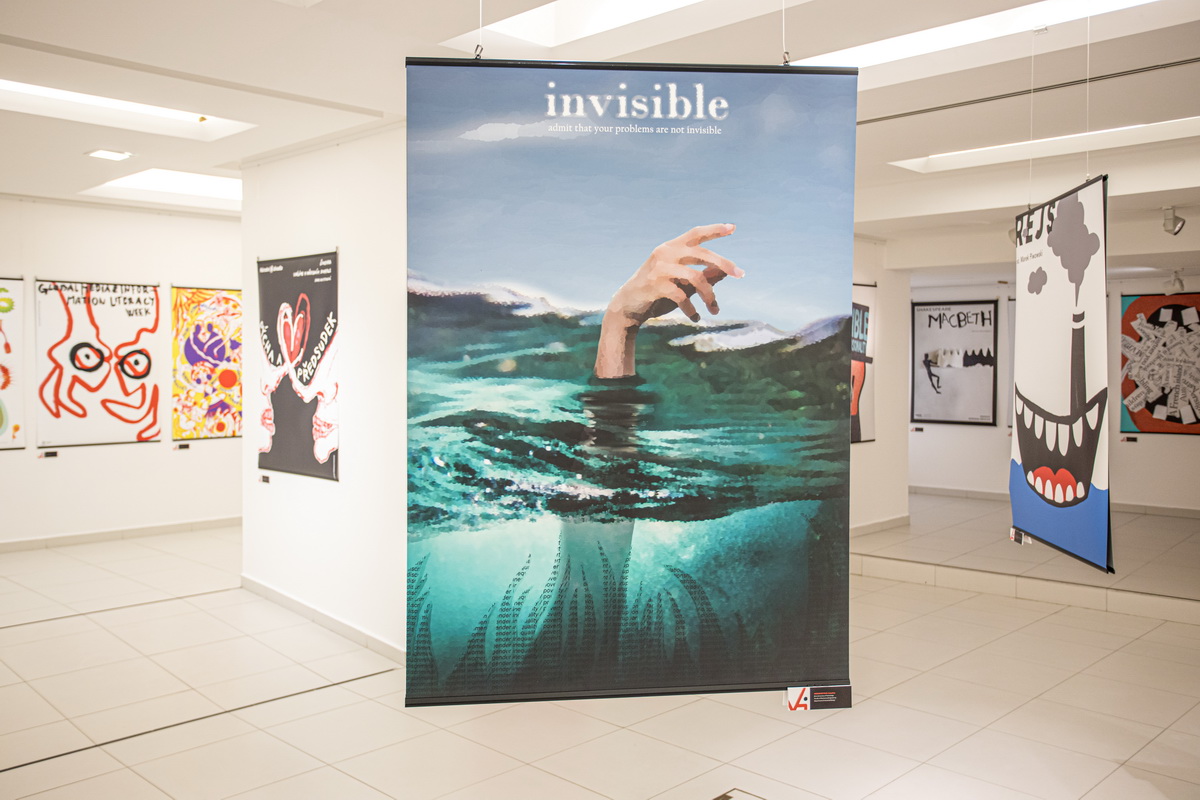
The exhibition entitled PosTerra showcased in the exhibition halls on Pesti Vigadó's ground floor and in its basement offers an insight into poster arts in the Visegrad 4 countries. How did the idea of the showcasing emerge?
So far there has not been any exhibition focusing on poster arts in the Visegrad 4 countries. Thus, in close cooperation with the Hungarian Academy of Arts, we strove to create – with the help of diverse artworks – a temporary space that offers a platform for dialogue between different nations through providing a common language for artists in the form of posters.
In the scope of your work as a curator, what principles did you follow when selecting posters for this exhibition?
The most important keyword of the exhibition "PosTerra" is cooperation. From each of the V4 countries, i.e. Poland, Slovakia, the Czech Republic and Hungary, three artists and their students were invited to exhibit at the show. During the selection process, the artists concerned decided which of their works they were going to present and it was also them who decided which of their students they were definitely going to invite to introduce themselves through their artworks. There were quite many potential artworks for display, and this necessitated the setting up of a jury for the purpose of making a selection. Also, the arrangement of the selected artworks in the exhibition spaces was not that obvious. Pesti Vigadó's ground floor exhibition hall has a really characteristic design, which also influenced our decision. In connection with the artistic concept, the design of this exhibition hall also had to be taken into account in order to ensure that the artworks could assume their rightful places in these halls. Obviously, the four countries involved in this project have similar values and roots and also have shared national histories from the end of the 20th century onwards. Thus the exhibition assigns a prominent role to presenting joint thinking and collective discourse through arts. For this reason, the idea that the artists of the different nationalities should exhibit their work separately in the exhibition halls was discarded. Instead, the posters have been mixed in the halls, which arrangement thereby increases the dialogue among the exhibited posters.
EXHIBITION REVIEW

